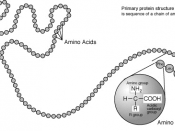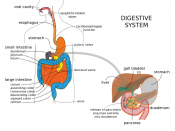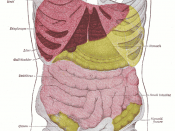Dear Mom,
So it's Thanksgiving and let us say for arguments sake that while we are all gathered around the table that for one reason or another the conversation comes to an abrupt end... Now if you are ailing at the thought, don't for I will be able to save the day!
I have just recently learned all about what macromolecules are in foods how they are synthesized and how they are broken down and used within our digestive system. Here we go!
Let's see what we have in front of us, some salad--garden--this is composed of vegetables and a fruit, tomato. These vegetables contain mainly cellulose which in reality doesn't do us any good, but that's later. Next we have mashed potatoes and rolls you can't forget the rolls. Then there is the main event, the turkey this has some gravy which if I am not mistaken has some fresh celery in it, crunchy, I like it.
This is really the idea of our meal without mentioning the pies waiting at the end.
All of the foods on the table contain at least one of three types of molecules. The first of which are carbohydrates. Carbohydrates are structural molecules, but more importantly they are the source for quick energy, sugars and starches are made of carbohydrates. Not to get too technical for you but they are composed of repeating units of Carbon, Hydrogen, and Oxygen atoms in a 1:2:1 ration. That is to say that if a molecule has 6 carbons, 12 hydrogens, and 6 oxygens, it would be a carbohydrate, this C6H12O6 happens to be glucose or its isomer fructose. But isomers are a whole other thesis, all you need to know is it's a carbohydrate. Simple carbohydrates are called monosaccharides, if two connect it becomes a disaccharide,


